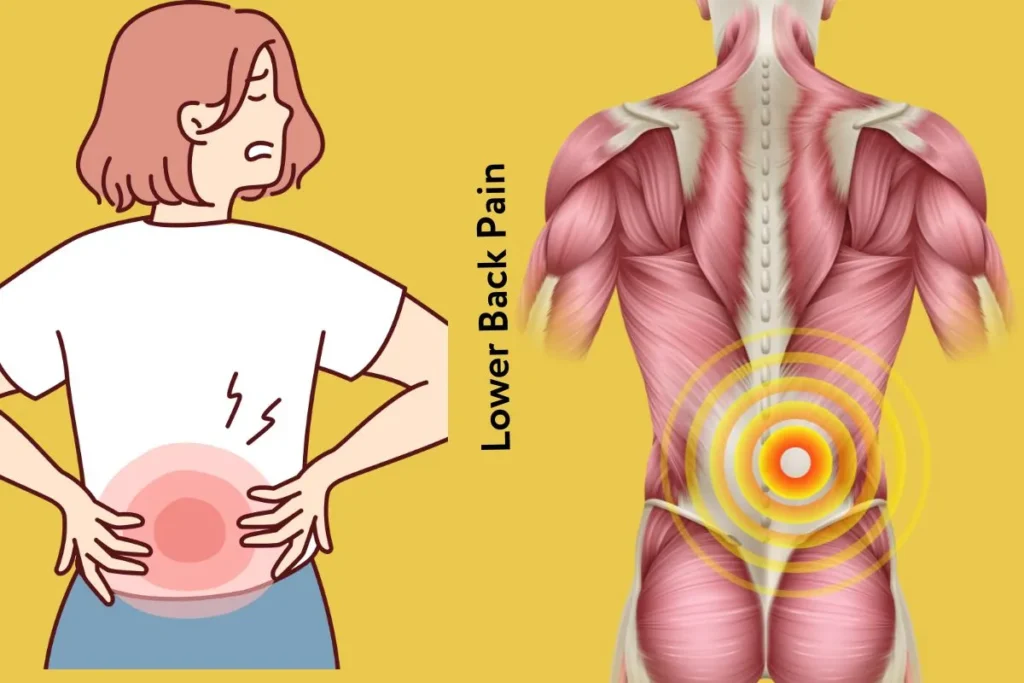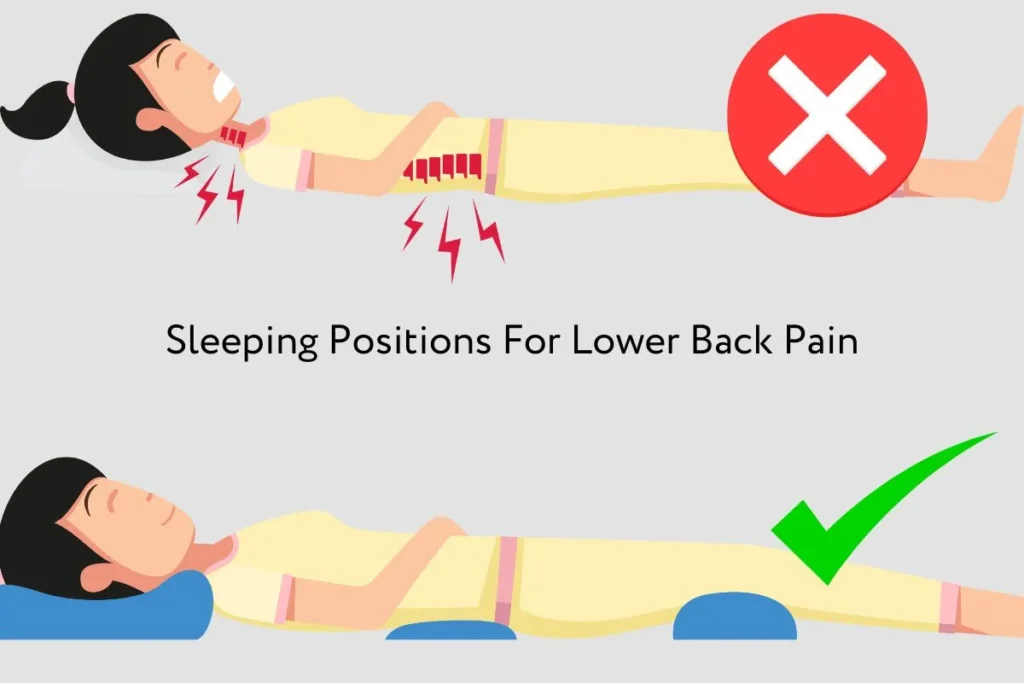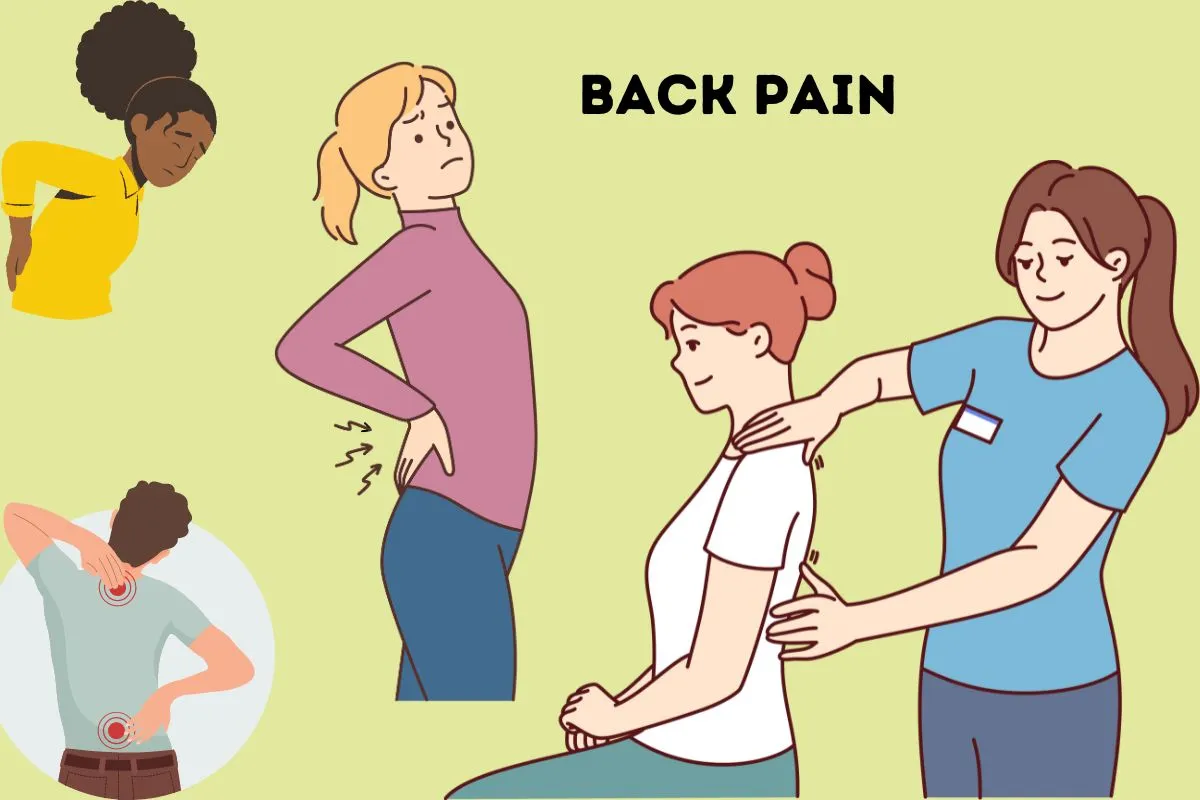Table of Contents
ToggleEnhance Your Sleep and Relieve Lower Back Pain with These Positions
Discover the best sleeping positions for lower back pain as lower back pain can be a significant hindrance to a good night’s sleep, affecting your overall well-being and daily activities. However, making simple adjustments to your sleeping position can make a world of difference in managing and reducing this discomfort.

Back pain is a pervasive health concern that affects millions of people worldwide, impacting their daily activities and overall quality of life. The seriousness of back pain cannot be overstated, as it can lead to significant discomfort, reduced mobility, and even disability if left untreated. Chronic lower back pain, in particular, can disrupt sleep patterns, impair concentration, and hinder productivity. Moreover, persistent back pain may contribute to mental health issues such as anxiety and depression, further exacerbating the overall burden on an individual’s well-being. Therefore, understanding effective strategies for managing and alleviating back pain, including adopting appropriate sleeping positions, is crucial for promoting physical and mental health resilience.
Here are some sleeping positions and tips that may help alleviate lower back pain:
Sleeping Positions for Lower Back Pain
- Lying Flat on Your Back
Lying flat on your back is often recommended for optimal spine alignment. To enhance this position’s effectiveness, place a pillow under your head or neck and another under your knees. This alignment helps relieve pressure on your lower back and promotes muscle relaxation.
- Sleeping on Your Side
If you prefer sleeping on your side, try drawing your legs up slightly toward your chest. Placing a pillow between your knees can further support your spine and alleviate strain on your lower back. Alternatively, sleep with a pillow supporting your knees to maintain proper alignment.
- Lying on Your Stomach
While sleeping on your stomach is generally discouraged due to the strain it puts on your back, you can try it with a pillow below your pelvis and lower abdomen. This positioning can help reduce pressure on your spine, although it may not be suitable for everyone.

Additional Tips for Better Sleep with Lower Back Pain:
- Choose the Right Mattress and Pillow: Investing in a supportive mattress and pillow can significantly improve your sleep quality and alleviate back pain.
- Practice Relaxation Techniques: Engage in relaxation techniques before bedtime, such as deep breathing or meditation, to promote better sleep and reduce muscle tension.
- Avoid Twisting or Bending at the Waist: When changing positions in bed, be mindful of your movements and avoid twisting or bending at the waist, which can exacerbate back pain.
In addition to adjusting your sleeping position, incorporating the following tips into your daily routine can further help ease lower back pain:
- Strengthen Your Core Muscles: Building strength in your core muscles can provide better support for your spine and reduce the risk of back pain.
- Stretch Daily: Incorporate stretching exercises into your daily routine to improve flexibility and alleviate muscle tightness.
- Maintain Good Posture: Practice proper posture, whether sitting, standing, or walking, to prevent unnecessary strain on your lower back.
- Stay Active: Engage in regular physical activity, such as walking or swimming, to keep your back muscles strong and flexible.
- Monitor Your Weight: Maintaining a healthy weight can reduce the strain on your lower back and alleviate pain.
- Quit Smoking: Smoking can impair blood flow to the spine and hinder the healing process, so quitting smoking can help improve back pain symptoms.
While lying down can offer relief from lower back pain, it’s essential to strike a balance and incorporate movement and stretching into your daily routine. Remember to consult with a healthcare professional if you experience chronic or severe back pain to explore suitable treatment options.
Conclusion
Managing lower back pain starts with understanding how your sleeping position and daily habits impact your spinal health. By making simple adjustments to your sleeping position, investing in a supportive mattress and pillow, and incorporating lifestyle changes such as regular exercise and maintaining good posture, you can alleviate discomfort and improve your overall well-being.
Remember, consistency is key, so be patient and persistent in implementing these strategies. If back pain persists or worsens, consult with a healthcare professional for personalized advice and treatment options tailored to your needs.
FAQs (Frequently Asked Questions) on Sleeping Positions For Lower Back Pain
- How long should I try a new sleeping position before expecting relief from back pain? It may take some time for your body to adjust to a new sleeping position. Give it at least a week of consistent practice before evaluating its effectiveness in relieving back pain.
- Are there specific mattresses or pillows recommended for people with lower back pain? Mattresses and pillows with medium firmness and adequate support are generally recommended for individuals with lower back pain. However, preferences may vary, so it’s essential to find what works best for you.
- Can stretching alone alleviate lower back pain, or should I combine it with other treatments? While stretching can help improve flexibility and reduce muscle tension, it’s often more effective when combined with other treatments such as strengthening exercises and lifestyle modifications.
- Is it normal to experience some discomfort when trying new sleeping positions for back pain? Yes, it’s common to experience mild discomfort initially as your body adjusts to a new sleeping position. However, if the discomfort persists or worsens, consider adjusting your position or seeking advice from a healthcare professional.
- Are there any specific exercises I should avoid if I have lower back pain? It’s essential to consult with a healthcare professional or a qualified fitness trainer before starting any exercise program, especially if you have existing back pain. Avoid high-impact exercises or movements that strain your lower back until you receive proper guidance.
